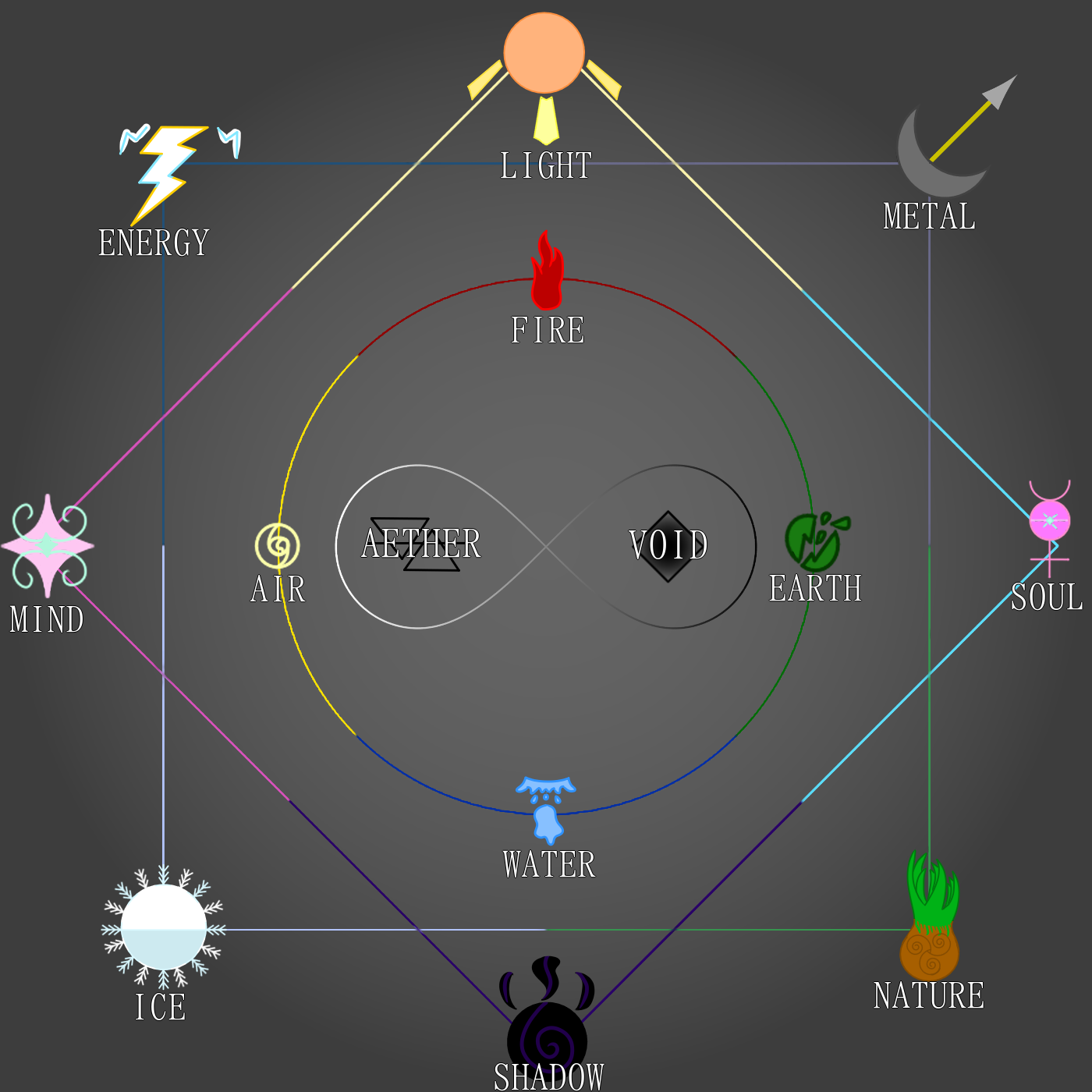Magic Arts and Spellcasters
Mana is the energy of all Metaphysical things. It comes from humans, nature, even phantasmal beings such as Angels and Demons, and the likes of Elementals and Supernaturals. Much like the soul, it is a unifying force of life.
Not everyone is capable of manipulating it, however, although it comes easier for creatures that are already set apart from the human world. The humans (and human-adjacents) that can manipulate the flow of Mana in various ways are generally known as Mages or Spellcasters, and centuries of mages have created a standard of abilities known as the Magic Arts.
Below, you will find information on the components of Spellcasting as well as the primary types of Spellcasters that utilize it.
Origins
No one knows who the first spellcaster was. Long before the age of writing, even in pictograms, there was Magic, and there were Spellcasters. In its origin, Magic was very primordial, manifesting in only a handful of the now-understood elements, and with many not having knowledge of complicated spell crafting. Magic and its related arts have undergone a long and winding road to be in the state it's currently in, with many different spellcasters combining their knowledge to discover the current array of elements, the different types of Spellcasting, and alternative arts such as Alchemy and Artifice. The modern form of Magecraft, and its collected understanding, was first brought together in 1535 by famed Alchemist Paracelsus and reaffirmed by various other notable mages across the worlds of man and magic. In the years following, refined by the string of apprentices carrying the Paracelsus title, this would become even more defined until it is now the accepted fact of the world.Components of Spellcasting
Each spell consists of the same parts: Willing your Mana to action, channeling it through various methods, erecting a Magic Circle or a similar array, and expending the energy to enact your spell. But, along the way of that path, there are a few variables that are different from Mage to Mage.Focus
A Focus is how your magic shows itself. Two mages casting the same type of spell will most likely have differing appearances for this very reason. Learned Mages have refined their Focus into a consistent state, one based on their personality and method of casting. For example, a Mage that specializes in Nature Magic and is more of a trap-setter than a quick-caster will most likely have Flowers as a Focus, as it matches their style. Of course, a Focus isn't always necessary for casting, and having a Focus that fits one type of casting doesn't limit you from others, but having a clear image of how your mana will flow and present itself makes spellcasting that much quicker.Specialty
A Mages Specialty is what kind of Magic they cast. While each style of Magic is a wide ocean of possibilities, most Mages will learn and refine one single specialty, much like how a person will typically only study one subject in higher education. There is not a limited amount of Specialties to pursue, and some Mages study their own unique pursuits. That being said, there are some general paths of study such as Healing, Alchemy, Battle Magic, Warding, Enchanting, and Summoning, just to name a few.Invocation
When it comes to Spells, Invocations are the style of Magic Circle that one uses to activate their spell. All Arcane Spellcraft requires a Circle, although not all of them have to be formed the same way. The most common Magic Circles are ephemeral circles of light that appear in front of the caster, usually emblazoned with complex sigils and signs relevant to the caster and their spell. Depending on a Mages Specialty, their Circles can take a different form. For example, Alchemists prepare potions and other items ahead of time, meaning they don't need to make a Circle in the moment, while Lithomancers (stone/gem Mages) make their Circles inside the stones they use or craft. Some types of Spellcaster don't need to make a Circle at all, although that'll be covered below in the Spellcasters section.Element
The Element of the spell is a large part of what gives it strength. While some spells can be used with any, or all, elements, many Spells require an exact or compatible elemental affinity to use properly. The Element available to a Spellcaster is heavily tied to their personal power, their Soul (Sometimes referred to as an Origin when speaking in purely magic terms). While each Mage will have an affinity for just one type of Element, they can practice and attempt to learn to use other Elements as well, although they still need to have some affinity for it, and the new element will typically be less effective or powerful compared to their primary Element. For the rest of the section, refer to this chart when we're speaking of the Elements. The four most essential elements are known as the Inner Four, and they are- Fire in the North
- Earth in the East
- Water in the South
- and Air in the West
- In the Northwest between Fire and Air, there is Energy, referred to in the modern day as Electricity
- Metal in the Northeast between Fire and Earth
- Nature in the Southeast between Earth and Water
- and Ice in the Southwest between Water and Air
- Light in the North, as a heightened form of Fire
- Soul aka Self in the East, as a heightened form of Earth
- Shadow in the South, as a heightened form of Water
- and Mind aka Space in the West, as a heightened form of Air




Comments